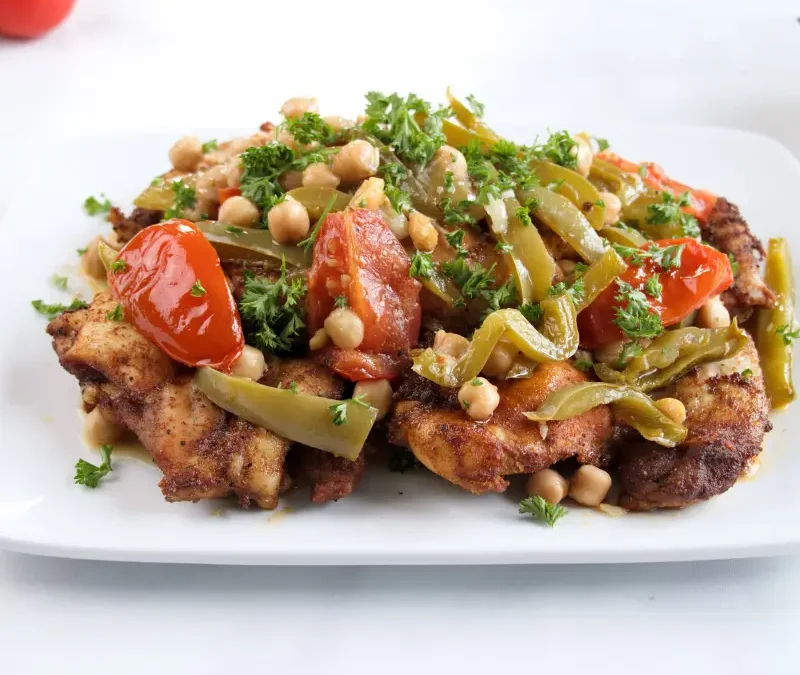
Simple Ways to Cut Sugar and Boost Energy After the Holidays
Through the holidays, you’ve thoroughly enjoyed all the delicious, decadent, nostalgic treats… and now you’re feeling a bit sluggish and tired. You’re smart enough to know that a “New Year, New You” overhaul isn’t the answer, but you do want to feel better and get back into a routine that supports you mentally and physically. You want more energy, fewer cravings, and maybe pants that fit a bit more comfortably again.
The tricky part? The only solution you’ve ever been taught is to swing hard in the opposite direction. Things like 75 Hard, 10-day sugar detoxes, Whole30 — extreme resets that promise control, but often leave you exhausted or frustrated by day five.
Most of us want to feel more disciplined and in control, but we don’t actually want a no-fun life that requires doing a ton of dishes. We want to feel less sluggish, less snack-obsessed, and more in charge of our cravings.
The good news?! That doesn’t require perfection. It just takes a few smart moves to quiet sugar cravings down without making us resent the act of planning, prepping, and cooking food.
Let’s make it doable.
Step One: Add, don’t subtract
Wild, right? Instead of focusing on “stop eating sugar,” try adding things that naturally reduce cravings:
- A source of protein with your breakfast
- A snack with fiber + fat (apple + peanut butter, nuts, hummus + veggies)
- A real lunch instead of a handful of leftovers
When you eat more balanced meals, your brain doesn’t go hunting for sugar to “save you” later. Sugar cravings calm down when your body feels fed.
Cravings aren’t lack of willpower… often times, they’re just you being under-fueled.
Step Two: Adjust Your Environment
Your surroundings matter. If sweets, leftover cookies, or candy tins are staring at you from the counter, it’s much harder to make balanced choices or even remember to eat a real meal first.
Try small environmental tweaks:
- Store treats out of sight or in a cupboard instead of on the counter.
- Pre-portion leftovers so you’re not mindlessly grazing from the container.
- Freeze holiday treats like cookies, brownies, or truffles to enjoy throughout the year, a little at a time.
- Keep healthy, easy-to-grab options front and center (salad kits, fruit, nuts, yogurt).
This doesn’t make sweets off-limits — it just makes them a little less convenient. That pause gives your brain a chance to check in: Do I actually want a cookie, or am I just hungry for lunch?
Changing your environment makes the “nourishing choice” an easier choice, and it takes the pressure off you to rely on willpower alone.
Step Three: Upgrade your sweets… just slightly
You don’t need a sugar-free dessert made of beans and stevia.
Focus on the sweets that actually satisfy you, not the ones that always keep you reaching for more — you know the sugary treats that only leave you feeling hungrier no matter how much you eat of them?
Think:
- Homemade treats where you can control the sweetness a little and perhaps include a bit of protein or fiber
- Chocolate-covered fruit
- Greek yogurt + chocolate chips
- Dark chocolate or candies in smaller portions
- Pair a holiday treat with some protein/fiber, or have it after a balanced meal
Tiny upgrades (like a little protein or fiber) mean you still get pleasure, but with fewer “sugar hangovers.”
Step Four: Build a better “sweet moment”
Sugar feels out of control when it’s:
- eaten mindlessly
- eaten instead of a meal
- used as stress relief
But sugar feels less of a big deal when you enjoy it intentionally.
Try making sweets an occasion:
- Plate it
- Sit down
- Actually taste it
- Allow yourself to enjoy it
- Once the treat has done its job, put it aside.
Sugar should be fun. It’s only a problem when it becomes a mindless habit or your only coping skill.
Step Five: Address the sneaky stuff
Ever notice the days you’re most tired… are the days you want sugar constantly?
Sleep, stress, dehydration — they all mess with your hunger hormones and make sugar feel irresistible. So instead of blaming the cookie, try:
- Drinking water before caffeine
- Taking a 5-minute break instead of snacking through stress
- Going to bed 15–30 minutes earlier
Sometimes the best “sugar strategy” has nothing to do with sugar at all.
The Well Balanced Reality
You don’t need to be the person who says no to every cookie.
You just need a body that isn’t constantly begging for sugar because it’s underfed, exhausted, or stressed out.
Reducing sugar without feeling punished has nothing to do with saying never
and everything to do with feeling satisfied, energized, and in control.
And when you treat your body that well…
It stops shouting for sugar and starts whispering for balance.
You don’t have to do this alone
You don’t have to figure this out alone. If you want real-life guidance, accountability, and a plan that works with your lifestyle, work with one of our friendly dietitians at Well Balanced Nutrition and get support that makes lasting change feel doable.







